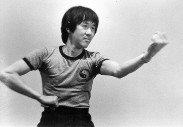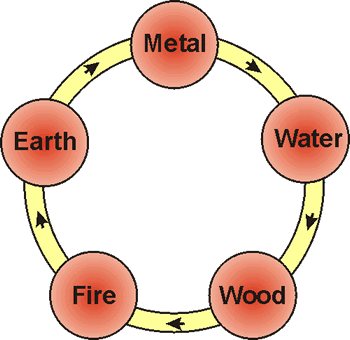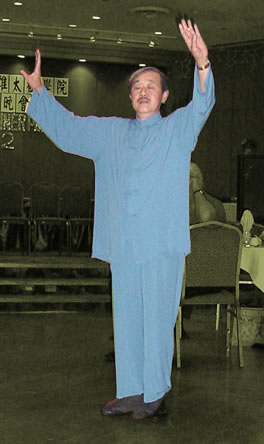Hsing-I Chuan
 Hsing-I Chuan was developed
nearly one thousand years ago during the Northern Sung Dynasty in China
and is one of the most famous of the original internal martial arts. Hsing-I
Chuan translates to "form and intention hand" or "body-mind hand". The
figure to the right, taken a few years ago, shows Sifu Mo practicing
Hsing-I.
Hsing-I Chuan was developed
nearly one thousand years ago during the Northern Sung Dynasty in China
and is one of the most famous of the original internal martial arts. Hsing-I
Chuan translates to "form and intention hand" or "body-mind hand". The
figure to the right, taken a few years ago, shows Sifu Mo practicing
Hsing-I.
A distinguishing characteristic of Hsing-I is the application of
small circular movements of the wrists, which develops great power.
The basic forms of Hsing-I are based on the five elements, their
properties, and their acupuncture meridians:
| Element |
Property |
Meridian |
| Metal |
Splitting |
Lungs |
| Water |
Drilling |
Kidneys |
| Wood |
Crushing |
Liver |
| Fire |
Pounding |
Heart |
| Earth |
Crossing |
Spleen |
| The elements and the properties they stand for change into each
other according to the figure to the right. |
 |
 |
In a sense, Hsing-I is like a waltz. A waltz has three simple
moves, and Hsing-I has five. However, like the waltz, the simple moves
of Hsing-I can be combined into thousands of variations, and their applications
are countless. There are Linking Forms which explore these variations
further.
The picture to the left shows Sifu Mo beginning a Linking Form.
The picture was taken in November 2002. |
One way of characterising Hsing-I is to contrast it with T'ai Chi. In T'ai
Chi, applying the moves of the form involves the giving and receiving of energy
with a partner, almost a conversation. Senior student Chris Schiller
contrasts this with Hsing-I by saying that in Hsing-I "there is no discussion."
This document is Copyright © 1999, 2000 Philip Mo. This page was
last updated (m/d/y) 12/26/02.
 Hsing-I Chuan was developed
nearly one thousand years ago during the Northern Sung Dynasty in China
and is one of the most famous of the original internal martial arts. Hsing-I
Chuan translates to "form and intention hand" or "body-mind hand". The
figure to the right, taken a few years ago, shows Sifu Mo practicing
Hsing-I.
Hsing-I Chuan was developed
nearly one thousand years ago during the Northern Sung Dynasty in China
and is one of the most famous of the original internal martial arts. Hsing-I
Chuan translates to "form and intention hand" or "body-mind hand". The
figure to the right, taken a few years ago, shows Sifu Mo practicing
Hsing-I.
